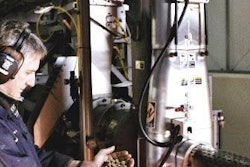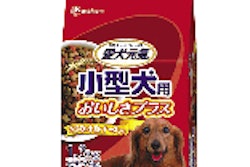May this year in Europe is Interzoo time. Many of the top names in the European petfood business are expected to attend the international pet supplies trade fair being held May 11-14, 2006 in Nürnberg (Nuremberg), southern Germany.
Promotion for the show has placed a heavy emphasis on its continued growth. This will be edition number 29 and it promises to be the biggest yet for display size. Two years ago there were 1,100 exhibitors, say the organizers, but the total number of stand holders in 2006 approaches 1,200. Almost three-quarters of these companies originate from outside Germany. Last time, exhibitors came from 47 countries. Their stands occupied 40,000 square meters of net floor space. In May, that will rise to 43,000 square meters.
Expansion has brought the need to use another exhibit hall on the Nuremberg showground. That will mean Interzoo 2006 will be occupying eight halls with a combined gross area of almost 79,000 square meters. Those visiting the trade-only event are therefore strongly advised to wear good walking shoes. Ideally, they should set aside more than a day for their visit. Experience suggests they should also prepare for an onslaught of marketing messages from petfood companies based in Asia and the Americas, as well as in Europe.
It needs no special skill in forecasting to predict that everyone's message will underline the natural origins of the ingredients used in complete foods for dogs and cats, or that an abundance of products will address allergies and food intolerances. But the 29th Interzoo is likely to go into the record books as the place for launches of dog treats and chews. In Western Europe, this section of the total market has been growing in value at rates of up to 10% per year, compared with 7% or less for complete dry dog foods. Look out for numerous additional dental chews, for example, among the multitude of products launched at the show.
Reassurance as more cats catch flu
Last month's column referred to the spread of the bird disease avian influenza from Asia into Europe, in terms of the impact this could have on petfood ingredient demands. However, it rather underplayed the extent to which pet owners have needed to be reassured about the low risk that the pathogenic flu virus might kill their cat or dog.
Owners in Western Europe have become even more alarmed following confirmation of the infection in three cats at an animal sanctuary in Austria, only weeks after the German authorities confirmed that a cat had died of the virus on Germany's Baltic coast. The incident in Germany had been explained as almost certainly due to the cat contracting the virus by eating an infected wild bird. Several European countries have found sick and dying birds among the populations of swans making the annual migration from east to west. It was already known, too, that the virus could pass to cats. Remember the widely-reported episode where the feeding of dead birds had killed tigers at a zoo in Thailand?
Austria's positive tests on the three cats were attributed to a similar cause, since they occurred little more than a month after the country found its first cases of the highly-pathogenic H5N1 influenza infection in wild birds. That hardly helped to dispel the sense of unrest felt by pet owners across Europe, however, especially when the health authorities in Germany advised that all cats in areas where the disease was detected should be kept indoors.
European federation Fediaf has decided to step into the breach with a calming message, describing the indoor restriction on cats in affected areas as a precautionary measure and urging people not to panic. Are dogs also at risk? The federation's note advised that dogs were not known to have contracted the virus. To judge from that advice, perhaps officials in Germany were just playing safe when they said dogs in a flu-stricken zone should be kept on a leash.

















